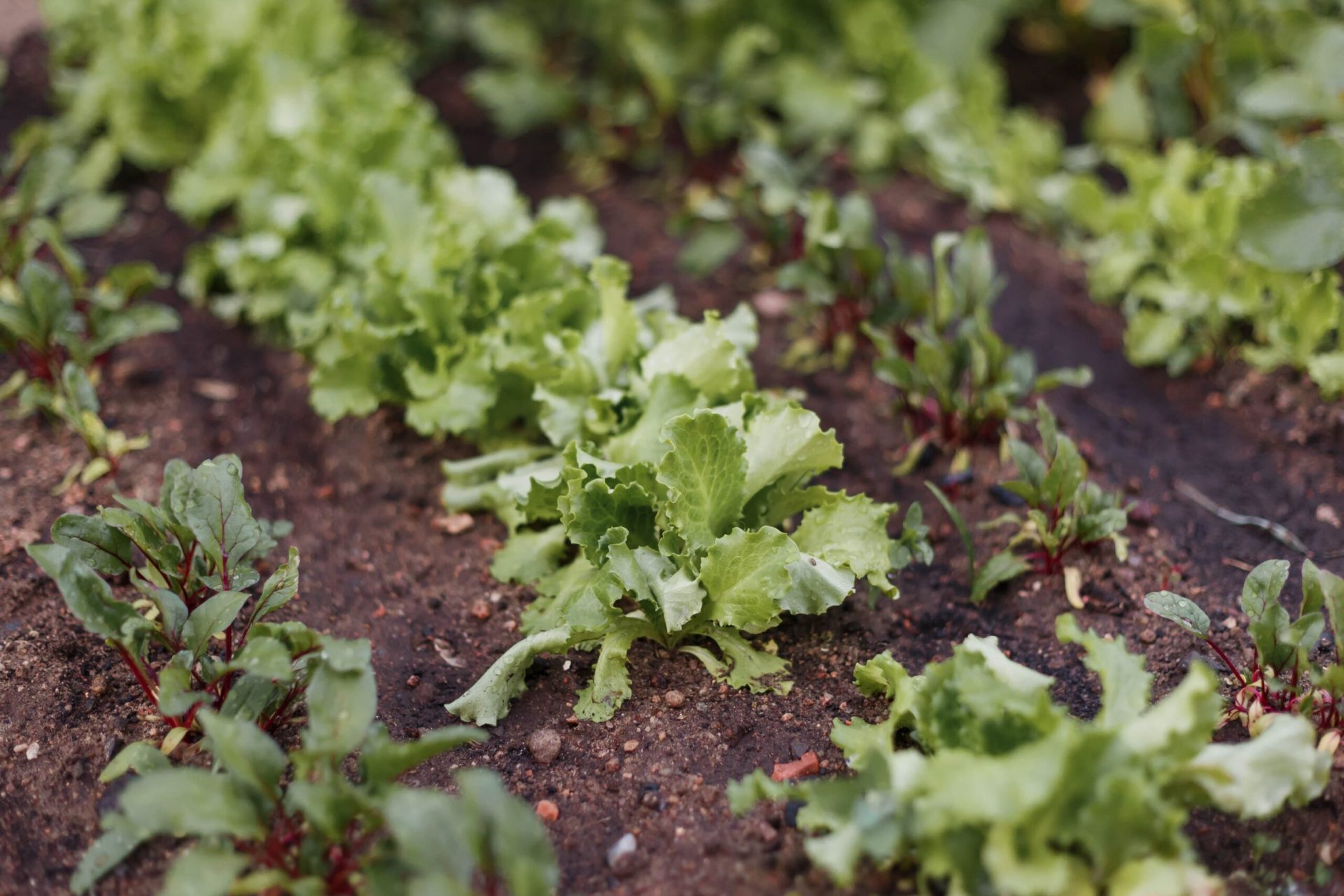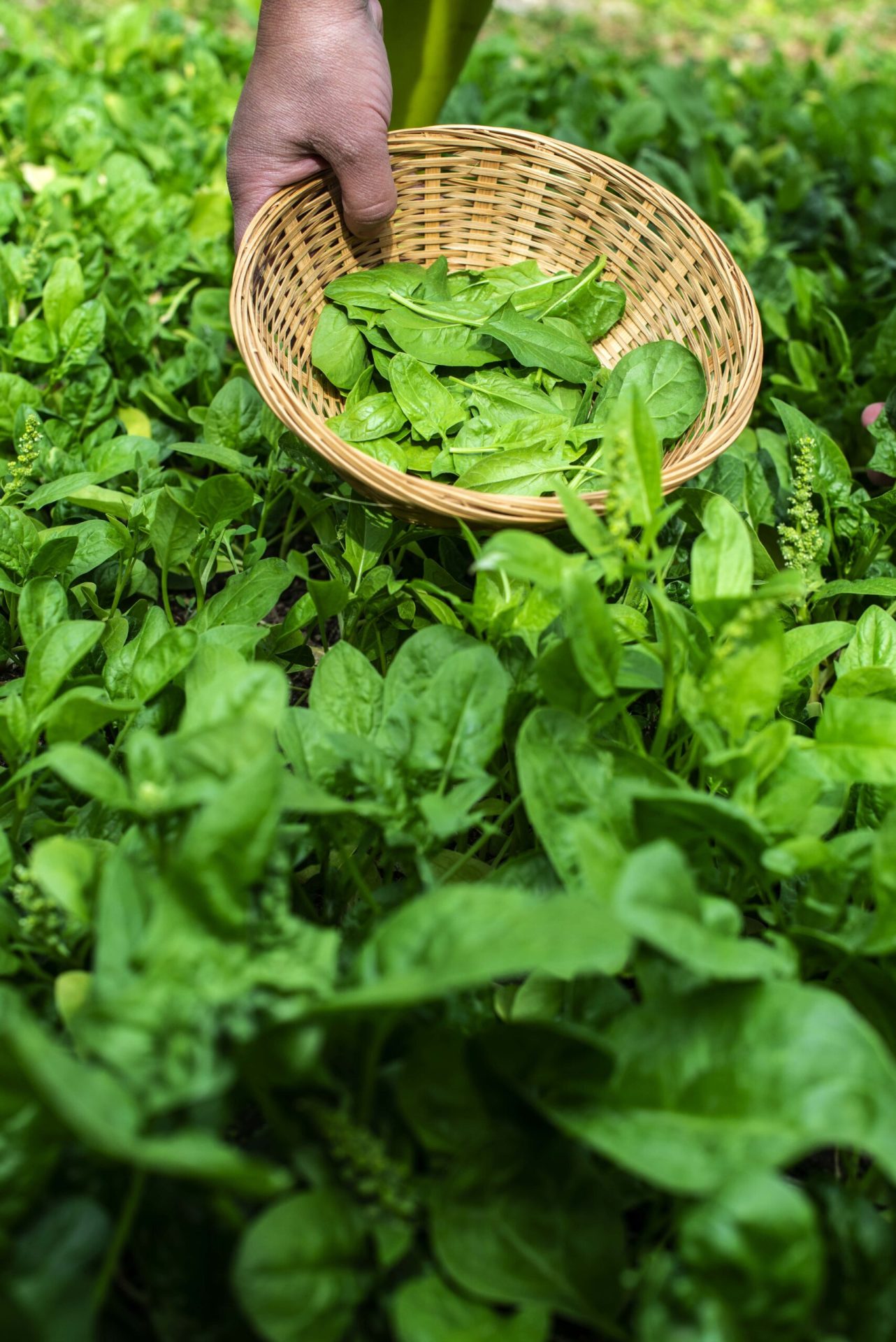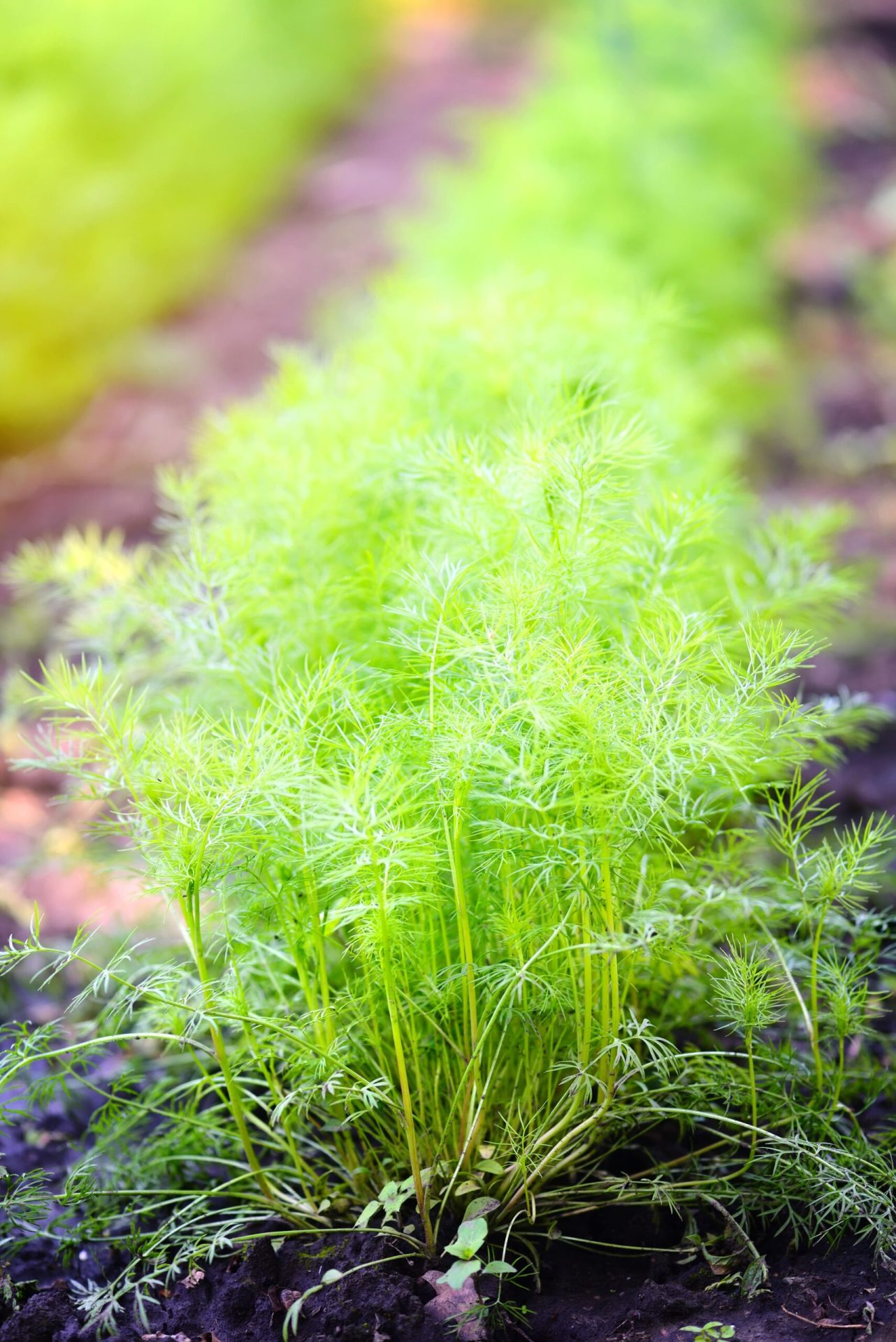Lettuce is one of the most popular crops among gardeners. That’s because it’s easy to grow, delicious, and grows quickly, so you can enjoy fresh lettuce all summer long.
Want to grow your best lettuce crop yet this year? Follow the tips in this lettuce growing guide. We’ll help you understand lettuce growing stages, varieties to choose from, and gardening tips to get the best results.
Growing Lettuce 101: Step-by-Step Guide
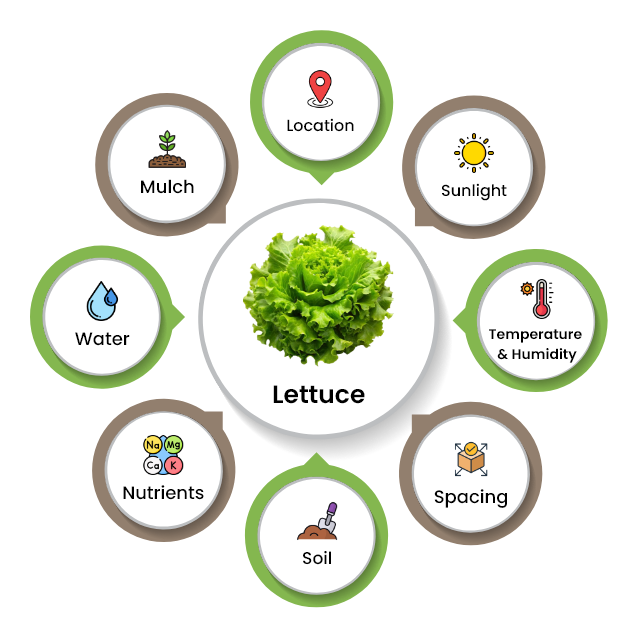
Location
Select a planting location that receives at least 6 to 8 hours of sunlight.
Temperature and Humidity
The optimum temperature for growing lettuce is 60-65°F. The humidity level for lettuce should be 50-70%.
Spacing
Space lettuce plants in rows 12-18 inches apart.
Soil
Lettuce grows well in loose, well-draining soil with a pH of 6.0-7.0.
Nutrients
Lettuce requires adequate levels of nitrogen (N), phosphorus (P), and potassium (K) for a quality harvest. Fertilize several times throughout the growing season with a balanced NPK fertilizer.
Water
Water your lettuce plants often, and up to twice a day on the hottest days. Keep the ground around the plant moist up to a depth of about two inches.
Mulch
Use straw, shredded leaves, paper mulch, or newspaper to boost water retention and keep the roots of the plant cooler.
How to Grow Lettuce from Seed?
- Choose a warm sowing site that receives full sunlight and has fertile soil that retains water.
- Weed thoroughly and dig in plenty of compost or aged manure.
- Rake the soil until fine and level up by removing any large stones.
How to Grow Lettuce in Containers?
Growing lettuce in containers is easy just follow these steps:
- Choose a container that is at least 6-8 inches wide and deep.
- Ensure it has good drainage holes to allow excess water to flow out.
- Fill the container with quality garden soil and compost.
- Plant the seeds by sprinkling them gently on top of the soil.
- Sprinkle a bit of potting soil over the seeds, but don’t bury them deeply.
- Water and keep the soil moist till the seeds germinate.
- Water once or twice daily.
- Make sure the soil does not dry out, else this can weaken or kill young lettuce plants.
How to Transplant Lettuce Seedlings?
- The best time to transplant lettuce seedlings is mid-spring to early summer, as they thrive better in cool temperatures.
- Seedlings should be about 2-3 inches high before you transplant them.
- Transplant seedlings, after it has developed two true leaves.
- Harden off your lettuce seedlings in about 7-10 days before transplanting them.
- Bring seedlings outdoors for a few hours, increasing the length of the day.
- Prepare the garden bed by loosening the soil and adding compost if available.
- Plant seedlings at the same depth as they were in the pot.
When to Plant Lettuce?
When planting lettuce seeds, it depends on when you want to harvest, the variety you choose, and your location. Be sure to select a suitable variety of lettuce for the right season to get a supply round the year.
The best time to grow lettuce is during the cool season – Spring and Fall. The ideal growing temperature for lettuce is between 45°F and 80°F. For the first week or two after planting, protect new transplanted lettuce seedlings if frost is in the forecast.
How to Plant Lettuce?
- Sow lettuce seeds in a row, considering the type of lettuce you are growing and the amount of space it requires.
- To grow different lettuce varieties, place markers in the soil to know where each type of lettuce has been planted.
- Cover the lettuce seeds with a thin layer of soil.
- Avoid sowing them too deeply.
- Sow your seeds in small pots or egg cartons indoors to prevent them from drowning in rainwater as they germinate.
Lettuce Growing Stages
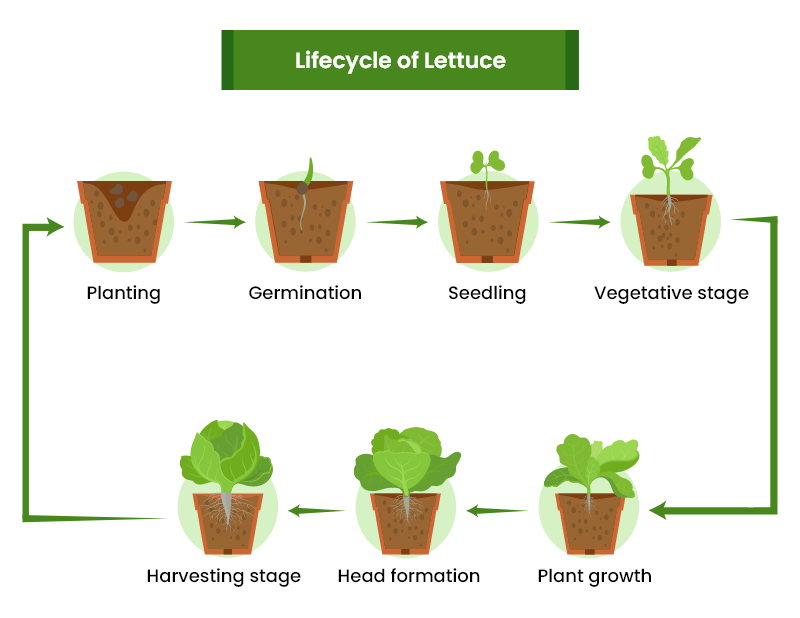
Planting
The best way to plant seeds is to scatter them evenly over the soil. Press them gently into the ground with your fingers. Sow lettuce seeds in the garden during spring, about two weeks after the last frost. If you live in a cooler climate, consider growing lettuce indoors.
Germination
Seeds absorb water and go through the germination process, which lasts for 5-10 days. Proper amount of humidity, oxygen, and temperature are essential for successful germination. When the seeds continue to germinate, you will notice the emergence of cotyledon leaves emerging from the soil.
Seedling
Lettuce develops its first set of true leaves, which differs from its initial cotyledon leaves. On maturity, the cotyledons stop growing and fall off when true leaves expand.
Thin seedlings during this stage. If the seedlings seem overcrowded, remove excess ones by hand. This ensures adequate spacing for healthy growth.
Vegetative stage – Rosette, Cupping and Heading
The leaves become larger, and the plants start to form a rosette shape. You will witness the cupping and heading stages shortly.
Rosette
The leaves achieve a circular shape. The appearance of the lettuce might vary based on its variety. The Romaine variety has long, upright leaves, and butter lettuce that displays lower and more ruffled leaves. It lasts about 25-50 days.
Cupping
This describes a brief period when leaves begin to curl inwards before forming a dense head. It lasts about a week.
Heading
This stage looks like dense romaine or tender bib heads with outer leaves curling towards inner side. It covers the plant’s small center leaves. The duration of this stage might vary anywhere from 20-45 days based on lettuce variety and time of the year.
Bolting
This stage describes the elongation of the lettuce plant’s flowering stalk. Bolting takes place when the plant gets exposed to high temperatures or experiences other types of environmental stress.
During this stage, the transition of lettuce from vegetative to reproductive growth takes place. The plant experiences this transition when exposed to high temperatures. You can detect bolting of lettuce, when you spot a rigid stalk from the center of the plant.
Harvesting
Harvest lettuce leaves early in the morning when they are crisp and at their freshest. Use a sharp knife or scissors to cut the leaves above the plant base.
How to Harvest Lettuce?
Harvest lettuce in the early morning when the veggies are in peak cool and crisp condition. Once lettuce leaves reach your desired size, they are ready to harvest.
Harvest Lettuce Leaf
Head lettuce has a growth habit like cabbage. Young leaves sprout from the center, and older leaves form layers to create a dense round or clumped form.
- Use garden shears to clip the leaves off near the stem.
- Approach from the side of the plant to get the best results.
- Slice off the lettuce head about an inch from the bottom.
- Leave enough of the base for new leaves to emerge.
- Repeat this before using them to harvest your next bunch of lettuce leaves.
Harvest Lettuce Head
Let a lettuce plant mature until it creates a full head of leaves.
- Harvest head lettuce with the “cut and done” method.
- Cut the entire lettuce head using a knife at the plant’s base above the soil line.
- Refer to the seed packet and note the days for harvest or maturity.
- As your plant grows, checks for signs of maturity as its head feels firm and filled out when it matures.
- Harvest before the weather becomes hot in spring when the temperature reaches 70°F during the day.
How to Store Lettuce?
- After harvesting lettuce, wash the leaves and dry them thoroughly.
- Wrap the leaves in a dry paper towel.
- Store leaves in a plastic bag or container in the refrigerator crisper drawer for 7-10 days.
- If the leaves wilt, give them a quick ice bath to revive them.
- Lettuce, which is slimy or has an odor, should be disposed of immediately.
Best Lettuce Varieties
Lettuce comes in different varieties and varying flavors, from buttery, mild, nutty, and even slightly bitter. Its texture varies from delicate to crunchy. Its color varies from pale, dark green to burgundy. Let us understand the 3 best lettuce varieties you can consider growing in your garden.
Romaine Lettuce
Also called cos, this lettuce variety bears green and crunchy leaves with large veins. It has a slightly sweeter and bolder flavor than its crisp head. It adds a mild burst to sandwiches, wraps, and salads.
Romaine lettuce is available in different varieties like red, green, bronze, or speckled. It tops among the heat-tolerant lettuce varieties. You should add these leaves near the end of the cooking to prevent them from getting soggy.
Butterhead Lettuce
It got its name from its buttery, soft leaves and has a smooth, buttery taste. It is known as cabbage lettuce due to its round shape. The leaves of this lettuce variety have a crumpled look like flower petals.
It is usually deep green, although red varieties exist. It adds a mild, sweet flavor to dishes. This lettuce variety matures in about 55-75 days.
Loose Leaf
It is one of the easiest lettuce varieties to grow. Harvest this variety as a whole lettuce or by the leaves on their maturity. It is heat-resistant and bolts slowly. It has a mild flavor and is pliable despite its crunchy stem.
The even ruffled surfaces of lettuce add a layer of textures to salads, wraps, and sandwiches. It is available in attractive shapes and colors, including green, red, and purple shades.
People often call this lettuce the “cut and come again” variety. Keep picking the leaves from individual plants throughout summer, and they will simply regrow. Harvest leaves when they are small, and you can do it in as little as 4 weeks from sowing seeds up to 10-12 weeks.
Common Pests and Diseases Problems with Lettuce
Gardening practices like crop rotation, proper spacing, and sanitation help manage pests and diseases. Use organic or chemical controls like neem oil, insecticidal soaps, and fungicides, following the product’s label instructions.
Proper watering and fertilization keep plants healthy and attracts helpful insects. Pests that affect the growth of lettuce are aphids, slugs and snails, cutworms, cabbage worms and loopers, and flea beetles. Diseases that might impact lettuce growth are downy mildew, leaf spot, fusarium wilt, powdery mildew, and sclerotinia.
Companion Plants for Lettuce

Growing the right companion plants with lettuce will help your greens thrive. Plant strawberries, beets, turnips, dill, basil, marigolds, carrots, peas, cilantro, parsnip, radish, catnip, nasturtium, eggplant, mint, garlic, and allium with lettuce.
They deter pests and attract beneficial insects to your garden. They improve soil health, provide shade, increase crop yields, and use garden space efficiently. Companion plants bring a balanced ecosystem to your landscape, allowing nature to do its task.

